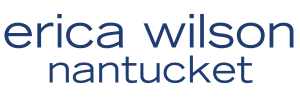When it comes to needlepoint, there is a plethora of yarns, threads, and canvas to choose from. Needlepoint threads and yarns come in a huge variety of weights, textures, colors, and fibers, and the materials you require can depend on multiple factors. With such an assortment of materials to choose from, trying to narrow down the right one for your needlepoint project can be confusing. Here is a guide about various yarn options and when you should use each one.
What Sort of Canvas are You Using?
When it comes to choosing the most suitable yarn for your project, you need to know what type of canvas you are using. The yarn you choose should match the thickness and weight of your needlepoint canvas. The yarn you pick should be fine enough to easily slip through the holes of the needlepoint canvas you choose for your project. It should not catch when slipping through, nor should it fray. Additionally, you don’t want the canvas threads to be obviously exposed in the design. Therefore it should be thick enough to not show through. When picking the perfect yarn for needlepoint, you should generally choose a heavy, thick type of yarn for a low canvas gauge number. For example, high gauge numbers require thin silk thread, while thicker yarn should be used for low gauge numbers like a gauge 3 rug canvas.
Popular Canvases Types
There are many types of needlepoint canvases, and they can be bought blank, with a painted design, or with a printed design. Blank canvases can be purchased by the yard and with absolutely no design, while canvases with designs, both painted and printed, can be bought as part of a needlepoint kit. These often include a needle, complimentary yarn, and instructions. When it comes to printed designs, open stock canvases are available. In addition, a canvas that has already been embroidered is available for purchase to people who wish to stitch part of the design. Popular types of canvases include mono (or single-thread), double-thread (also known as Penelope), interlock, and plastic. These canvases are available in different types of meshes, and these meshes determine the fabric count and the number of stitches required in one linear inch. In other words, you need to count the number of holes while measuring 1 inch along with the canvas on a line. Therefore, a canvas with a 10 mesh count means that there are 10 holes (or stitches) per square inch, while an 18 mesh canvas has 18 holes per square inch.
Mono Canvas
Single-thread canvases, also known as mono canvas, are usually available with 10, 12, 13, 14, and 18 meshes. These canvases feature holes that are evenly divided crosswise and lengthwise by single threads. This type of canvas is the perfect choice for needlepoint beginners and can be used with a variety of stitches, apart from the half cross stitch.
Double-thread Canvas
Popularly known as the Penelope canvas, double-thread canvases can be found with 5/10 and 10/20 meshes. This type of canvas is woven with double spreads and is suitable for all needlepoint stitches. Double-thread canvases can be used for petit point stitches.
Interlock Canvas
Interlock canvases are available in 10, 12, 13, 14, and 18 mesh and are aptly named for their interlocking horizontal and vertical threads. The horizontal threads that wrap around the vertical threads are thinner, which makes the interlock canvas more lightweight than other canvas types. It is ideal for needlepoint projects that are smaller and framed.
Plastic Canvas
Plastic canvases come in many different shapes and are available in 7 and 10 mesh. However, perforated plastic canvases are also available in a number of colors and in 14 mesh. Plastic canvas features square holes, while perforated plastic canvas features round holes that are smaller. They are both flexible yet sturdy, and they don’t unravel. This makes them practical for functional items and items that have unfinished edges.
Is the Yarn Suitable for the Final Result?
When asking the question, ‘what yarn is required for needlepoint?’, you should consider the final result. In other words, functional items that will be used a lot, like couch cushions and chair seats, will need strong, heavy-duty yarn, such as wool yarn, while decorative pieces only require thin yarn and thread. When choosing the best needlework yarn for your project, think about the intended use of your project. Matching the yarn durability and fiber to the type of item you want to create is an efficient way to determine the type of material you require. Not to mention, certain types of yarn and thread come in a variety of rich colors, which is advantageous for specific projects.
Commonly Used Yarns and Threads
When it comes to needlepoint, almost all fibers that can slip through a tapestry needle, and can also be threaded through the holes of a needlepoint canvas, can be used. However, not all fibers are suitable for all projects, as indicated above. Erica Wilson offers a huge range of fibers in a multitude of colors, which are ideal for different types of projects. Here are a few commonly used yarns and threads that are available for purchase.
Crewel Yarn
Crewel yarn is thin and spun from crewel wool or acrylic. It is popularly used for crewel embroidery and as needlepoint yarn.
Tapestry Yarn
Tapestry yarn is also a thin, single-strand yarn that is spun from wool or acrylic. Tapestry yarn can be difficult to separate.
Persian Yarn
Some yarns are easy to separate into smaller strands to create thinner yarn for particular projects. For example, Persian needlepoint yarn has three strands, it is all-purpose, and more strands can be added to create a thicker yarn.
Embroidery Floss
Embroidery floss is available in rayon, silk, and cotton. It has multiple strands, and the strands are easily separated to create the desired thickness for different types of projects.




